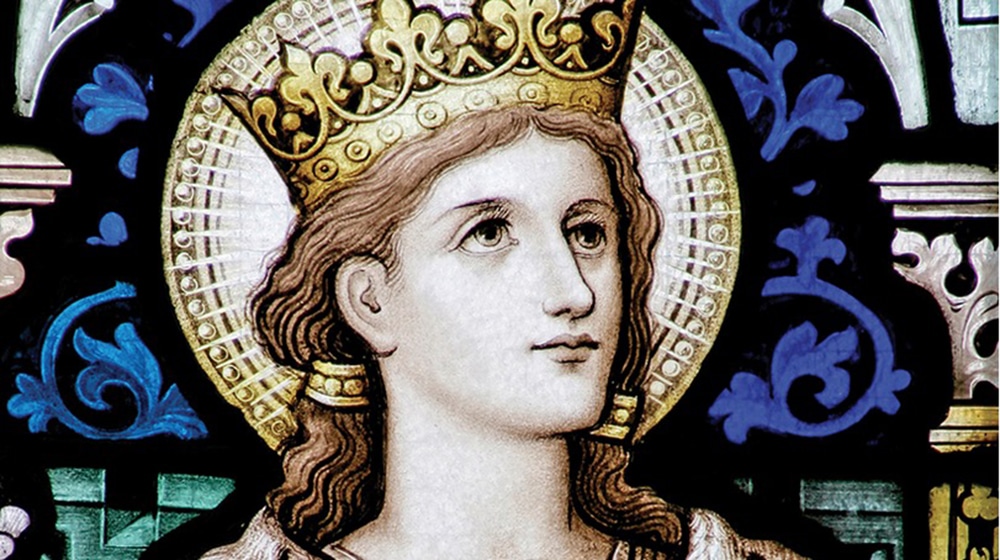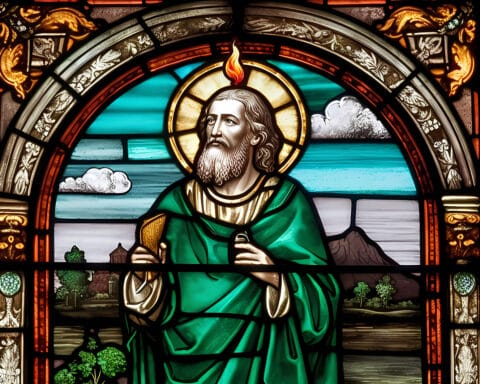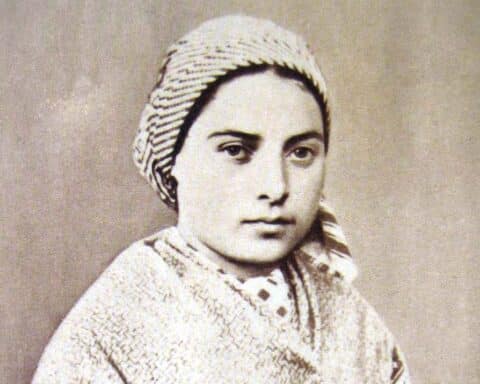
I stayed in a hostel, walked up and down the Royal Mile; visited St. Giles’ Cathedral, the Scotch Whisky museum, and The Writers’ Museum; and climbed the Salisbury Crags to Arthur’s Seat, the highest peak in Edinburgh. The natural beauty was stunning, and I’ve always wanted to return to explore the area more.
One of the first places to which I would return is St. Margaret’s Chapel, the oldest building on the grounds of Edinburgh Castle. The chapel was built around 1130 by King David I, who named it after his mother, Queen Margaret of Scotland. Though the reign of Queen Margaret pre-dates the chapel, it’s possible that its foundation was her own private oratory. Rectangular and small, the chapel holds only about 20 people and is still used for weddings and christenings. But more importantly, it was a place dedicated to the future St. Margaret of Scotland — and which, as the 20th-century minister of the Church of Scotland Ronald Selby Wright wrote, “seems still to weave the spell of her love and prayers.”
I love St. Margaret’s story for so many reasons — and not just because she is my patron saint. But before we get to all that, let’s go back to the beginning. Despite eventually marrying a king, Margaret had not prepared herself for a life of royalty. Though she was the granddaughter of King Edmund Ironside of England, Margaret was born and raised in Hungary, where her father had been sent for safety as a child. Naturally contemplative, Margaret was raised in the Benedictine tradition of ora et labora (prayer and work) and had an eye toward religious life.
When she was about 20 years old, Margaret ended up in Edinburgh, where she caught the eye of King Malcolm III, who had to propose to her numerous times before she accepted him. The historical manuscript known as the Anglo-Saxon Chronicle attributes this to God’s plan, stating, “The Creator knew beforehand what he would have made of her. For she was to increase God’s praise in the land and direct the king from the erring path and bend him to a better way and his people with him … .”
And this is what Queen Margaret did, and why she is now counted among the saints in heaven. But the ripple effects of her life had little to do with her position of power and everything to do with her love of the Almighty. Because of her devotion to God and her deep prayer life, Margaret was selfless and had a great love of others. Because of her nature and her deep concern for her people, her husband was devoted to her. Because of his devotion, he allowed her to influence both himself and the country they loved. She used her influence to care for the poor, to bring about social change, and to increase devotion to Christ among their people. She was a servant to all, not the least of which were her husband and eight children, to whom she was devoted. Margaret’s three youngest sons are counted among some of Scotland’s best kings.
The lives of the saints show us over and over the path to heaven. It is not power or prestige that matters. Possessions and position mean nothing. All is dependent upon one’s love of God — or lack thereof. As the life of St. Margaret of Scotland reminds us, it needn’t be more complicated than that.
Gretchen R. Crowe is editorial director for periodicals at OSV. Follow her on Twitter @GretchenOSV.





